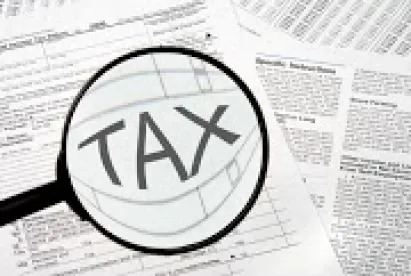On November 2, President Obama signed into law the Bipartisan Budget Act of 2015 (the “Budget Act”). The Budget Act repeals and replaces the rules under the Tax Equity and Fiscal Responsibility Act of 1982 (“TEFRA”) that currently govern partnership tax audits. The procedures depart from TEFRA in a number of ways, most notably by allowing the Internal Revenue Service (the “IRS”) to assess and collect income tax at the partnership level rather than the partner level, even though partnerships are not generally subject to entity-level income tax. Hurriedly enacted as a revenue raiser at the eleventh hour of the negotiations over the Federal budget, this complicated overhaul of partnership tax audit procedures contains a host of ambiguities and technical flaws that will need to be ironed out through technical corrections legislation, Treasury regulations, and other IRS guidance. The new procedures are generally effective for tax years beginning after December 31, 2017, but partnerships may elect to apply the provisions to any tax year beginning after November 2, 2015. (As used herein, the term “partnership” includes a limited liability company taxed as a partnership.)
Current Law
Under TEFRA, the IRS conducts unified audits of partnership items at the partnership level for most partnerships. The IRS proposes partnership-level adjustments, and a designated representative of the partnership, the tax matters partner (“TMP”), can contest the proposed adjustments on behalf of all partners. Other partners generally may participate in the contest if they wish. Once the partnership-level adjustments have been finally determined, the IRS is required to adjust the return of each direct and indirect partner accordingly and to make separate assessments for the tax owed by each such person. In the case of partnerships with many partners, the prospect of having to track down the relevant returns of each direct and indirect partner for the relevant periods, and to make all the required individual adjustments, has proved enormously time consuming for the IRS and has deterred it from conducting audits of large partnerships such as private equity funds, hedge funds, and publicly traded partnerships (“PTPs”).
Partnership Representative Rather Than Tax Matters Partner
The Budget Act replaces the TMP with the partnership representative (“PR”). The partnership may select any person as its PR, as long as the person has a substantial U.S. presence. Unlike the TMP under TEFRA, the PR need not be a partner of the partnership. The flexibility of the new provision will allow non-member managers of limited liability companies or an investment manager of an investment fund to serve as the PR.
The PR possesses greater powers than a TEFRA TMP and can bind the partnership in all of its actions, including how and whether to challenge an IRS notice of final partnership adjustment. Unlike TEFRA, the Budget Act does not provide a separate procedure for a partner to challenge the IRS adjustment, either as to the substance of the adjustment or as to its application to the partner’s own return. The Budget Act allows a partner to file a return inconsistent with the partnership’s return if the partner attaches a statement identifying the inconsistency, but the statute does not expressly give such a partner a right to participate in any IRS or judicial proceedings to resolve the inconsistency.
General Rule: Partnership Liable for Tax
As its default rule, the Budget Act provides that the partnership, rather than its partners, will be liable for payment of any taxes due as a result of adjustments to the partnership’s income, gain, loss, deduction, and credit. The rate of tax applied at the partnership level will be the highest rate of tax applicable to individuals or corporations for the year under audit (the “Audit Year”). The Budget Act directs the IRS to provide adjustment procedures for partners with different rates and for tax-exempt partners, such as nonprofits and foreign investors.
The Budget Act entity-level tax assessment procedures create obvious issues if the partners in the partnership change from year to year—as is generally the case for hedge funds and PTPs—or the partnership’s allocation of tax items changes from year to year—as is typically the case for renewable energy partnerships, professional service partnerships and many other partnerships with preferred returns or carried interests. One can expect PTPs and other partnerships, for whom the task of tracking down partners for prior years will be infeasible, to simply pay any IRS deficiency and let the current partners bear the burden. For smaller partnerships, the partnership will want the ability, if necessary, to allocate any such liabilities among the persons who were partners during the Audit Year.
Alternative Regime: Partnership Allocates Adjustment Among Audit Year Partners
If a partnership receives a notice of final partnership adjustment, then the partnership, through the action of the PR, may elect to pass through the adjustment to each of the persons that were partners during the Audit Year. The PR must so elect within 45 days of receipt of the notice. However, unlike under TEFRA, the partnership, and not the IRS, is responsible for tracking down the relevant partners and former partners. In the case of partnerships with significant partner turnover, such as PTPs and hedge funds, this procedure will be impractical. Moreover, under this pass-through approach, the interest rate that will apply to all deficiencies will be the large corporate underpayment rate, which is two percentage points higher than the normally applicable interest rate. Nevertheless, we expect that many smaller partnerships may elect this alternative regime as a matter of fairness to the current partners.
Electing out of New Partnership Audit Procedures
The Budget Act provides an opportunity for certain smaller partnerships to elect out of the new partnership audit procedures completely. To qualify for the election, (i) the partnership must have 100 or fewer partners; (ii) unless the IRS issues regulations to the contrary, which seems unlikely, none of the partners may itself be a partnership or a trust; and (iii) each partner must be an individual, an estate, a C corporation, a foreign entity that would be a treated as a C corporation if it were domestic, or an S corporation. Each shareholder of an S corporation partner counts toward the 100 partner limitation. The election must be made annually with the return of the partnership. Given the requirements for this election, private equity funds and hedge funds seldom will qualify. Moreover, if the partnership makes the election, the highly cumbersome pre-TEFRA procedures will apply. Thus, there will be no unified partnership proceeding and all adjustments and all litigation will be conducted at the individual partner level.
Planning for the Budget Act
Although the new rules under the Budget Act will first apply to returns filed during 2019 ( i.e., for a partnership’s 2018 taxable year), partnerships and their advisors need to plan now for these eventual changes. Anyone entering into a new partnership agreement or acquiring an interest in an existing partnership should focus on what tax audit rights, and what tax representations and covenants, to seek. Partners of “small partnerships” should consider whether to bind themselves to the election-out procedures and whether to adopt transfer restrictions that will insure that the election-out remains available. Existing partnerships should begin consideration of the procedures for designating the PR and whether to utilize the alternative regime for allocation of assessed tax liability back to the partners in the Audit Year.





 />i
/>i

